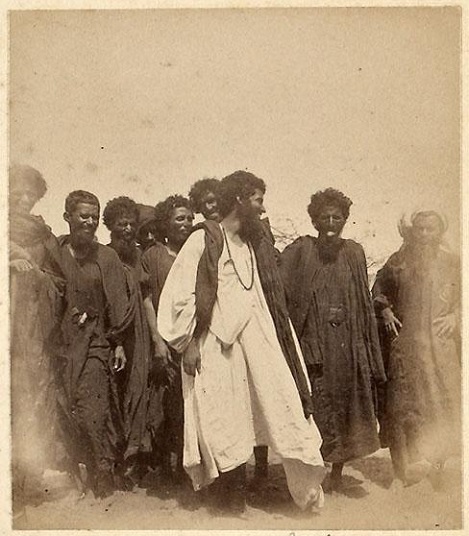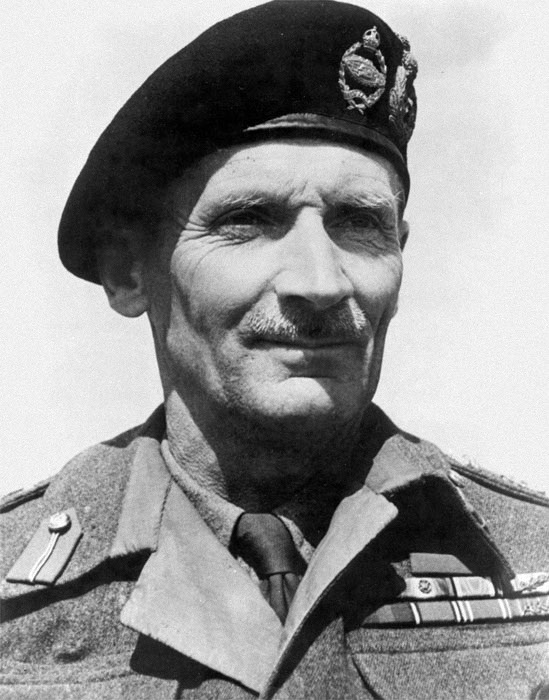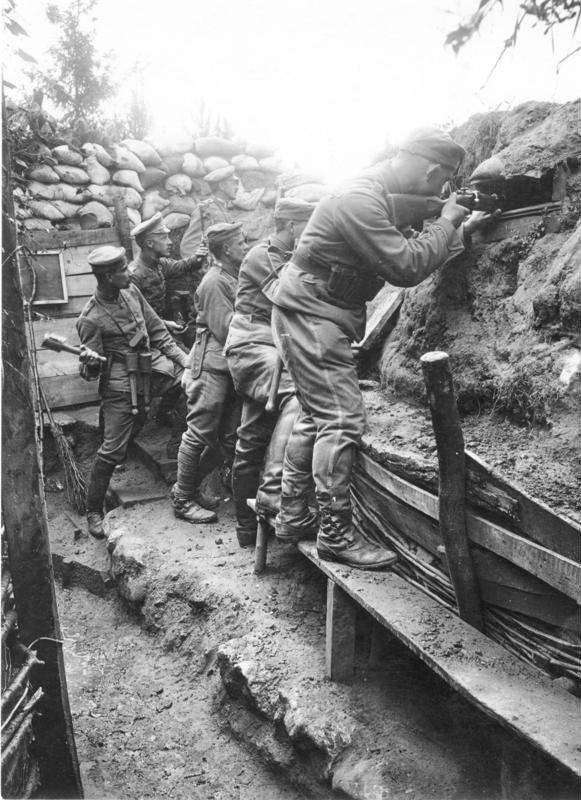|
Battle Of Leybar Bridge
The Battle of Leybar Bridge was fought on 21 April 1855 between the Trarza army of Mohammed al-Habib and the French garrison of the tower on Leybar Bridge, outside of Saint-Louis in the French colony of Senegal, during the Second Franco-Trarza War. Background After his striking victory against a combined Trarza-Waalo force in late February 1855, French governor Louis Faidherbe tried to negotiate a peace with Emir Mohammed al-Habib, in which he demanded the abolition of taxes paid by France to the Trarza for the right to use the Senegal River, the end of Trarza raids on Waalo and the renunciation of the claim the Emir's son had on the throne of Waalo. The Emir responded that his own conditions were the increase of existing taxes, the removal of all French forts alongside the river, the establishment of new taxes and the dismissal of Faidherbe as governor. On 12 April 1855, following a Trarza attack against the French outpost of Richard Toll, Faidherbe departed from Saint-Louis ... [...More Info...] [...Related Items...] OR: [Wikipedia] [Google] [Baidu] |
Emirate Of Trarza
The Emirate of Trarza was a precolonial state in what is today southwest Mauritania. It has survived as a traditional confederation of semi-nomadic peoples to the present day. Its name is shared with the modern Region of Trarza. The population, a mixture of Berber tribes, had been there for a long time before being conquered in the 11th century by Hassaniya Arabic speakers from the north. Europeans later called these people Moors/''Maures'', and thus have titled this group "the Trarza Moors". Early history Trarza, founded in the midst of the final wars between the local Berber Bedouins and the Arab conquerors of the Maghreb, was organized as a semi-nomadic state led by a Muslim prince, or emir. Trarza was one of three powerful emirates that controlled the northwest bank of the Senegal River from the 17th to the 19th centuries CE; the others were the emirates of Brakna, and the Tagant. Society and structure The Arab conquests had resulted in a society divided accordin ... [...More Info...] [...Related Items...] OR: [Wikipedia] [Google] [Baidu] |
Salat
(, plural , romanized: or Old Arabic ͡sˤaˈloːh, ( or Old Arabic ͡sˤaˈloːtʰin construct state) ), also known as ( fa, نماز) and also spelled , are prayers performed by Muslims. Facing the , the direction of the Kaaba with respect to those praying, Muslims pray first standing and later kneeling or sitting on the ground, reciting prescribed prayers and phrases from the Quran as they bow and prostrate themselves in between. is composed of prescribed repetitive cycles of bows and prostrations, called ( ). The number of s, also known as units of prayer, varies from prayer to prayer. Ritual purity and are prerequisites for performing the prayers. The daily obligatory prayers collectively form the second of the five pillars in Islam, observed three or five times (the latter being the majority) every day at prescribed times. These are usually (observed at dawn), (observed at noon), (observed late in the afternoon), (observed after sunset), and (observe ... [...More Info...] [...Related Items...] OR: [Wikipedia] [Google] [Baidu] |
Military History Of Mauritania
A military, also known collectively as armed forces, is a heavily armed, highly organized force primarily intended for warfare. It is typically authorized and maintained by a sovereign state, with its members identifiable by their distinct military uniform. It may consist of one or more military branches such as an army, navy, air force, space force, marines, or coast guard. The main task of the military is usually defined as defence of the state and its interests against external armed threats. In broad usage, the terms ''armed forces'' and ''military'' are often treated as synonymous, although in technical usage a distinction is sometimes made in which a country's armed forces may include both its military and other paramilitary forces. There are various forms of irregular military forces, not belonging to a recognized state; though they share many attributes with regular military forces, they are less often referred to as simply ''military''. A nation's military may ... [...More Info...] [...Related Items...] OR: [Wikipedia] [Google] [Baidu] |
Trarza Region
Trarza ( ar, ولاية الترارزة) is a region in southwest Mauritania. Its capital is Rosso. Other major cities and towns include Mederdra and Boutilimit. Trarza borders the regions of Inchiri and Adrar to the north, Brakna to the east, and the country of Senegal to the south. Its western coastline on the Atlantic Ocean is interrupted only by the Mauritanian capital Nouakchott, which the region completely surrounds. In 2013, the population of the region was 272,773, compared to 345,076 in 2011. There were 47.79 per cent females and 52.21 per cent males. In 2008, the activity rate was 42.60 and economic dependency ratio was 0.99. The literacy rate for people aged 15 years and over was 79.0 per cent. Demographics In 2013, the population of the region was 272,773, compared to 345,076 in 2011. There were 47.79 per cent females and 52.21 per cent males. In 2008, the Couples with children was 35.10 and Couples without children was 3.70. The proportion with extended family was ... [...More Info...] [...Related Items...] OR: [Wikipedia] [Google] [Baidu] |
Médaille Militaire
The ''Médaille militaire'' ( en, Military Medal) is a military decoration of the French Republic for other ranks for meritorious service and acts of bravery in action against an enemy force. It is the third highest award of the French Republic, after the Légion d'honneur, a civil and military order, and the ordre de la Libération, a Second World War-only order. The ''Médaille militaire'' is therefore the most senior entirely military active French decoration. During World War I, 230,000 ''médailles'' were awarded, when 1,400,000 French Army soldiers were killed and 3,000,000 wounded. For comparison, the UK Military Medal was awarded on 115,000 ... [...More Info...] [...Related Items...] OR: [Wikipedia] [Google] [Baidu] |
Legion Of Honour
The National Order of the Legion of Honour (french: Ordre national de la Légion d'honneur), formerly the Royal Order of the Legion of Honour ('), is the highest French order of merit, both military and civil. Established in 1802 by Napoleon Bonaparte, it has been retained (with occasional slight alterations) by all later French governments and regimes. The order's motto is ' ("Honour and Fatherland"); its seat is the Palais de la Légion d'Honneur next to the Musée d'Orsay, on the left bank of the Seine in Paris. The order is divided into five degrees of increasing distinction: ' (Knight), ' (Officer), ' (Commander), ' (Grand Officer) and ' ( Grand Cross). History Consulate During the French Revolution, all of the French orders of chivalry were abolished and replaced with Weapons of Honour. It was the wish of Napoleon Bonaparte, the First Consul, to create a reward to commend civilians and soldiers. From this wish was instituted a , a body of men that was not an ord ... [...More Info...] [...Related Items...] OR: [Wikipedia] [Google] [Baidu] |
Cattle
Cattle (''Bos taurus'') are large, domesticated, cloven-hooved, herbivores. They are a prominent modern member of the subfamily Bovinae and the most widespread species of the genus '' Bos''. Adult females are referred to as cows and adult males are referred to as bulls. Cattle are commonly raised as livestock for meat (beef or veal, see beef cattle), for milk (see dairy cattle), and for hides, which are used to make leather. They are used as riding animals and draft animals ( oxen or bullocks, which pull carts, plows and other implements). Another product of cattle is their dung, which can be used to create manure or fuel. In some regions, such as parts of India, cattle have significant religious significance. Cattle, mostly small breeds such as the Miniature Zebu, are also kept as pets. Different types of cattle are common to different geographic areas. Taurine cattle are found primarily in Europe and temperate areas of Asia, the Americas, and Australia. Zeb ... [...More Info...] [...Related Items...] OR: [Wikipedia] [Google] [Baidu] |
Bethio
The Principality of Bethio (also spelled Bequio, Bekio, Bitio, Bétio or Beetyo) was a small monarchy located for centuries along the lower Senegal River valley, on the border between modern Mauritania and Senegal, in the northeast of Biffeche. In the 18th century it was also called the "Royaume d'Oral"Boobihbincreess.lkkok. Its capital was at Poum, then moved to N'Dombo, and finally moved to Ross, Senegal in the 19th century (called Ross Béthio since then). The original, fertile farmlands of Bethio are in a region just east of the Djoudj National Bird Sanctuary. In the 1720s, the Brak (king) of Oualo (Waalo) was Erim M'Bagnick (Yérim Mbañik) and Béquio Malicouri king of the ''Royaume d'Oral'' was his vassal. The latter appears to have been succeeded by Fara Coro. In the 18th century the most famous "Prince Bethio" was Maalixuri (Malichouri) (Malikhuri Diop ) who was legendary for his cleverness, changes of strategy, and defiance in disputes with the Kingdom of Waalo and ... [...More Info...] [...Related Items...] OR: [Wikipedia] [Google] [Baidu] |
Rosso
Rosso is the major city of south-western Mauritania and capital of Trarza region. It is situated on the Senegal River at the head of the river zone allowing year-round navigation. The town is 204 km south of the capital Nouakchott. The Arabic name is Al-Quwarib. History Rosso was once the capital of the Emirate of Trarza, a Precolonial Sahrawi dominated state in Africa. Under French colonial rule Senegal and Mauritania were administered as a single entity. When independence came, the new frontier was drawn along the Senegal River, thus splitting the small town of Rosso in two. This article refers to Mauritanian Rosso, on the northern bank of the river. Originally a staging-post for the gum arabic trade, Rosso has grown rapidly since independence. From a population of a mere 2 300 in 1960 it has now overtaken Kaédi to become the 3rd largest city in the country with 48 922 inhabitants (2000 census). Languages Southwestern Mauritania is predominantly a Wolof-spea ... [...More Info...] [...Related Items...] OR: [Wikipedia] [Google] [Baidu] |
Gunpowder
Gunpowder, also commonly known as black powder to distinguish it from modern smokeless powder, is the earliest known chemical explosive. It consists of a mixture of sulfur, carbon (in the form of charcoal) and potassium nitrate ( saltpeter). The sulfur and carbon act as fuels while the saltpeter is an oxidizer. Gunpowder has been widely used as a propellant in firearms, artillery, rocketry, and pyrotechnics, including use as a blasting agent for explosives in quarrying, mining, building pipelines and road building. Gunpowder is classified as a low explosive because of its relatively slow decomposition rate and consequently low brisance. Low explosives deflagrate (i.e., burn at subsonic speeds), whereas high explosives detonate, producing a supersonic shockwave. Ignition of gunpowder packed behind a projectile generates enough pressure to force the shot from the muzzle at high speed, but usually not enough force to rupture the gun barrel. It thus makes a good pro ... [...More Info...] [...Related Items...] OR: [Wikipedia] [Google] [Baidu] |
Loophole (firearm)
A loophole is a protected small opening, which allows a firearm to be aimed and discharged, while providing cover and concealment for the rifleman. To prevent detection, the rifle's muzzle should not protrude through the loophole, particularly at night to hide the muzzle flash. Arrowslit The precursor to the loophole for firearms was the arrowslit, which is a narrow aperture in a fortification for an archer to launch arrows or an arbalist to launch crossbow bolts. The earliest use of the arrowslit was alleged to have been by Archimedes during the siege of Syracuse in 214–212 BC. Arrowslits were used in ancient Greek warfare and by the military of ancient Rome. There was a reintroduction of arrowslits during the medieval warfare period at Dover Castle and Framlingham Castle in England and by Richard the Lionheart at Château Gaillard in France. First World War During the First World War, the static movement of trench warfare and a need for protection from snipers ... [...More Info...] [...Related Items...] OR: [Wikipedia] [Google] [Baidu] |
4th Marine Infantry Regiment
The 4th Marine Infantry Regiment (french: 4e Régiment d'Infanterie de Marine, 4e RIMa) was a French marine regiment of the troupes de marine within the French Army. This regiment was part of the « Quatre Grands » of the Marine Infantry along with the 1st Marine Infantry Regiment 1er RIMa, the 2nd Marine Infantry Regiment 2e RIMa, the 3rd Marine Infantry Regiment 3e RIMa, however was dissolved in 1998. Along with the 1st Marine Artillery Regiment 1er RAMa and 2nd Marine Artillery Regiment 2e RAMa, the 4th Marine formed of the two brigades of the Blue Division. On June 14, 2001, the GSMA of Mayotte, heir to the 4th Marine Infantry Regiment, received the color guard of the regimental colors. Creating and different nominations * The origin of this regiment is the " Royal Marine" (french: Royal Marine) founded by the Sun King Louis XIV in 1669. * The 4th Marine Infantry Regiment was created from elements of the regiment of Brest. * The 4th Marine Infantry Regiment of Augu ... [...More Info...] [...Related Items...] OR: [Wikipedia] [Google] [Baidu] |








